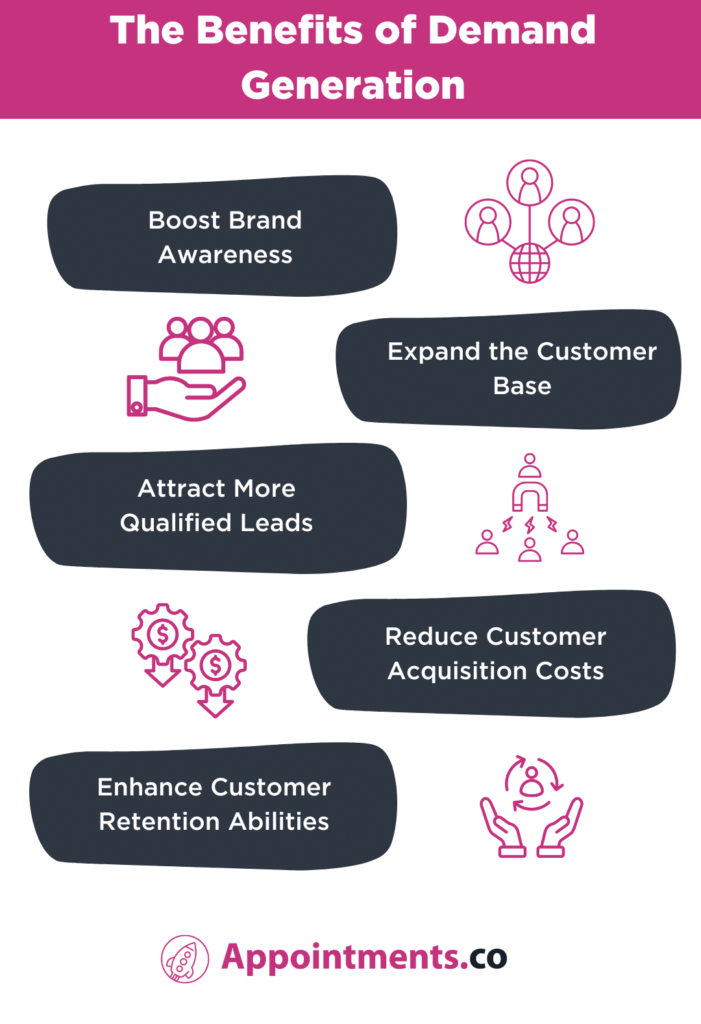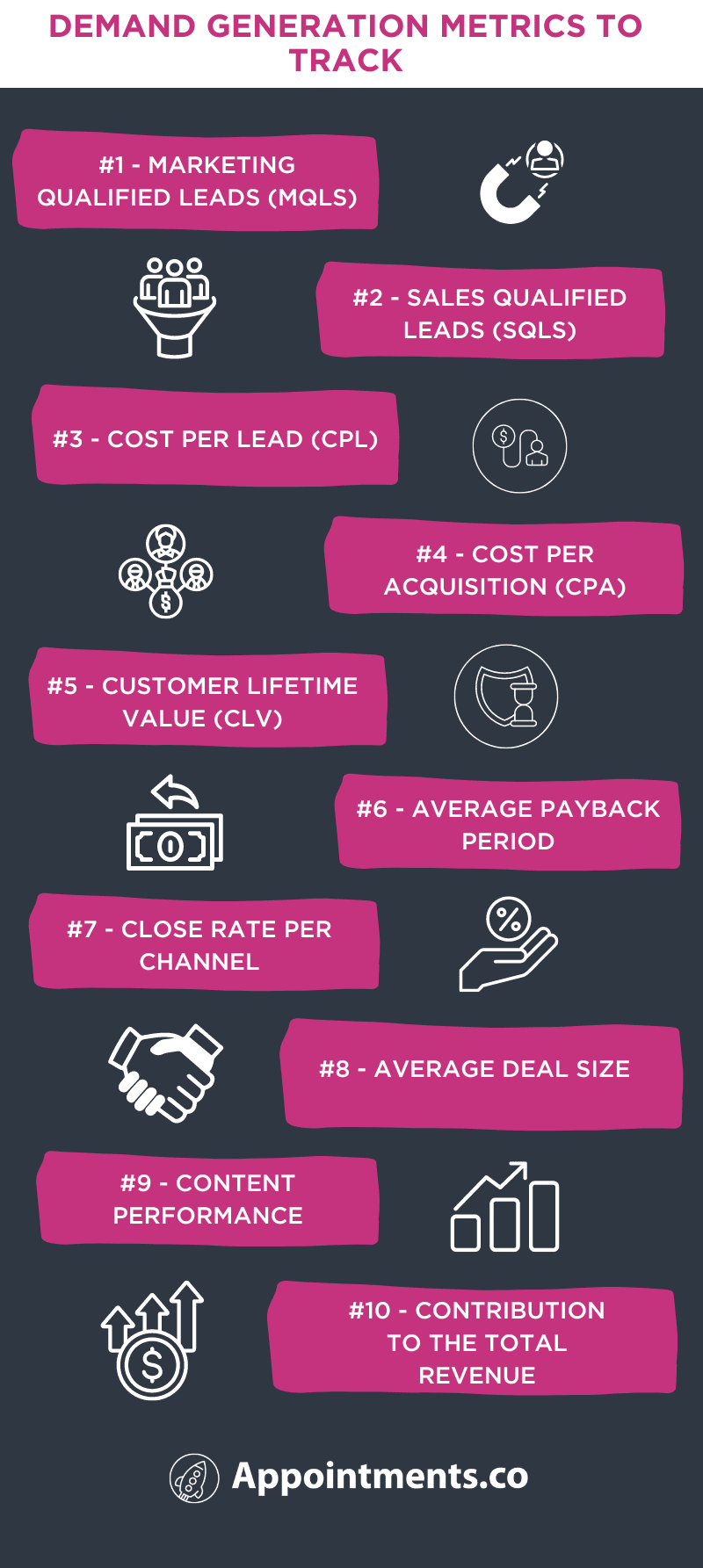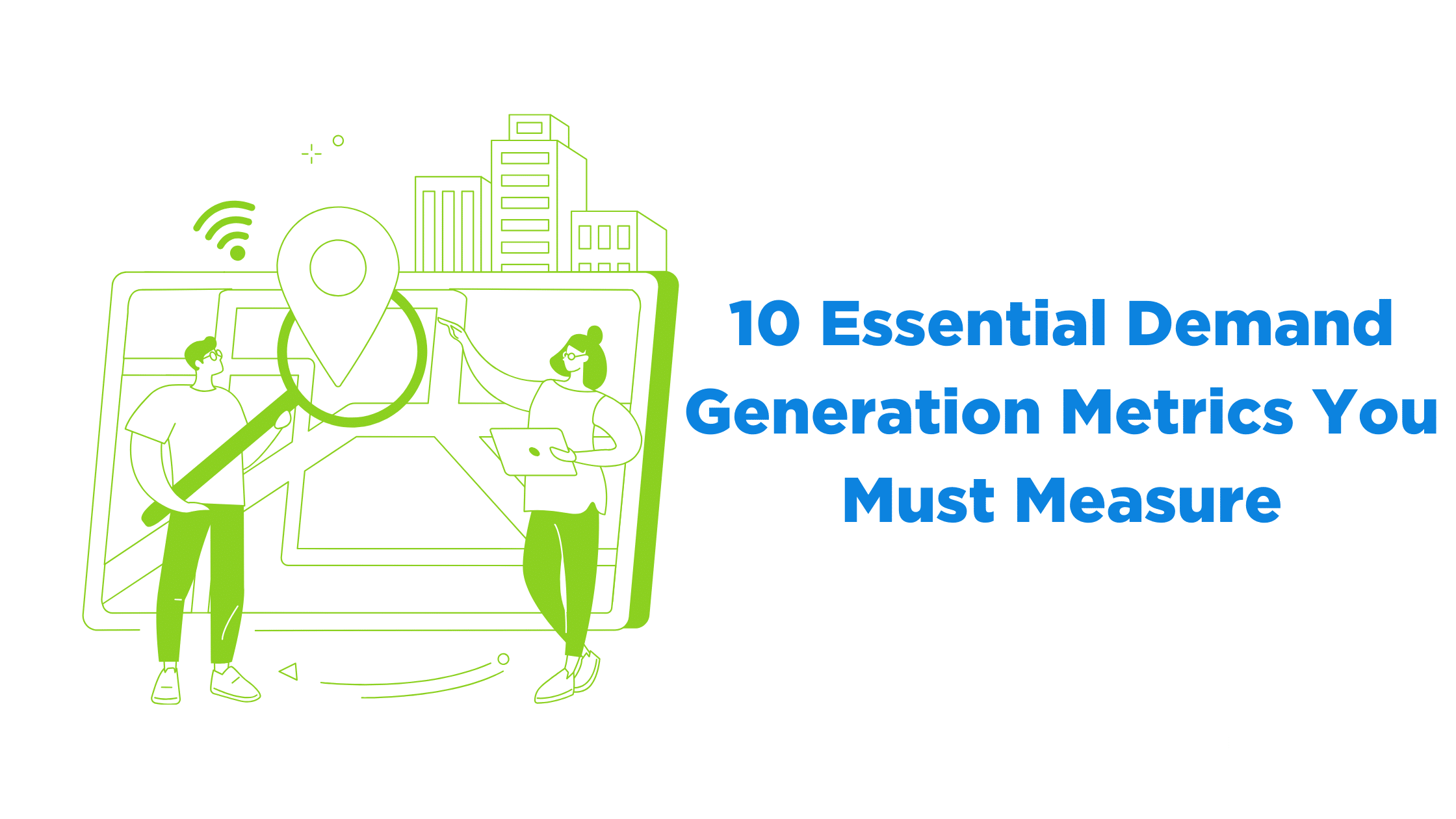In this digital age, there are a lot of tools that marketers have at their disposal. This means that there is a lot of data, and focusing on less relevant data that isn’t insightful for your demand generation campaign can only lead you in the wrong direction.
So, it is important to define the metrics and data in the proper context to gather more actionable insights. This way, you can track the right metrics to accurately measure the effectiveness of your demand generation campaigns at different stages of the funnel.
Don’t get overwhelmed by monitoring and tracking a long list of marketing metrics. We have put together a list of ten crucial demand-generation metrics that you should focus on. Let’s quickly go through the basics, then we will get to the list.
Quick Links:
- Demand Generation Metric – How Effective It Is?
- The Benefits of Demand Generation
- What is a Marketing Metric?
- Why do You need to Measure Demand Generation?
- Demand Generation Metrics to Monitor
- FAQs
Demand Generation Metric – How Effective It Is?
Demand generation metrics are the measurements used to track the performance of your demand generation strategies. Ensuring the correctness and effectiveness of a strategy is highly crucial to understanding if your idea works or if it needs any alterations. Based on the results of measuring your practices, you can come to a conclusion about how worthy your strategy is. Using these demand generation metrics, you can also measure the performance of your team.
What is Demand Generation?
Before proceeding further with the metrics, let us brush up on what demand generation is.
Demand generation is the process of making a business acquire customers to maximize revenue. Simply put, a demand generation campaign involves creating brand awareness, interest, and demand for products and services through data-driven strategies.
Unlike lead generation, which is focused on simply acquiring a lead, a demand generation strategy applies everything, including brand awareness, lead generation, conversion optimization, and improving sales.
The Benefits of Demand Generation

- Boost Brand Awareness – With rich and engaging content that focuses on creating interest, your brand’s digital presence solidifies, and you gradually become an authority or point of reference in the industry.
- Expand the Customer Base – Demand generation helps businesses expand their customer base by reaching new audiences through specific marketing materials that highlight the benefits of particular products and services.
- Attract More Qualified Leads – As you create interest and bring in leads to your sales funnel, they are likely to be qualified, and your sales team can quickly push them down the funnel. This increases the chances of closing more deals.
- Reduce Customer Acquisition Costs – The cost of acquiring new customers is significantly reduced as demand generation marketing focuses on organic methods. You can convince prospects through quality content with fewer steps that you have a great solution.
- Enhance Customer Retention Abilities – Demand generation methodology focuses on customers throughout their lifecycle. It will help them understand the value of your products and services in their lives, which may result in repeat customers.
What Is a Marketing Metric?
Before we go any further, let’s first clarify a marketing metric.
Businesses use different channels and platforms like social media, search engines, emails, PPC, webinars, and so on to reach their target audience, prospects, and customers. So, how can you measure the reach, the performance, and the success?
Well, that is where a marketing metric comes in. These metrics are a quantifiable way to track performance and measure the effectiveness of any campaign. The values will tell you what you are doing right/wrong and how you can improve to achieve better results.
Why You Must Measure Demand Generation
Demand generation campaigns focus on long-term results, so the strategies need to be effective. It is not good practice if you are executing your strategy without knowing if they are working or not for your target audience. To optimize the strategy and improve the effectiveness of the campaigns over time, it is important to measure and monitor the demand generation metrics.
By doing so, you can drive the campaigns in the right direction. You should know the points that need improvements and understand how effectively a strategy is working out for your brand. So, these are enough reasons to measure and keep track of your demand generation campaigns regularly. Let’s check out the metrics that you should measure.
Demand Generation Metrics to Monitor
We have elaborated on 10 demand-generation metrics that will help you measure your demand-generation marketing performance so you can strategize accordingly.

#1 – Marketing Qualified Leads (MQLs)
Marketing Qualified Leads is one of the most essential, important, and fundamental metrics you need to start tracking to keep your revenue goals on track. A market-qualified lead is a lead that is likely to convert into a sale or purchase. An MQL will likely recognize and welcome your brand’s marketing or nurturing.
Note: It isn’t someone ready to buy there and then, but someone aware of your brand, one who needs it and is willing to learn more about it and avail or purchase it.
But the challenging part is that you need excellent lead knowledge and tactics to determine your Marketing Qualified Leads. A few factors in determining an MQL are page clicks on your website (like the sales and product pages), average time spent on the site, number of visits to your site, or signups for a newsletter.
Actions like these indicate a potential lead is engaging with your product but needs more marketing to move to the next stage of purchasing. Once an MQL is identified, the sales team takes over to push them further down the funnel. Tracking MQL conversions can help you analyze whether you are reaching the right target audience with your marketing efforts.
#2 – Sales Qualified Leads (SQLs)
Sales qualified lead (SQL) is a prospect that moved from a marketing-qualified lead down the funnel. This is a lead that your sales team believes is more likely to make a purchase, so your team can offer them helpful content to push them into the sales funnel.
Tracking SQL conversions can help you analyze your sales pipeline. You can measure the percentage of MQLs that turn into SQLs, as well as the number of SQLs that turn into customers. This can help you identify how many quality leads you get with your demand-generation ventures. When paired with some other marketing metrics, you can gather more insights.
#3 – Cost Per Lead (CPL)
Cost-per-lead is measured by dividing advertising costs by the total number of leads generated. Measuring the Cost Per Lead will help you track how much you are spending on campaigns and marketing channels. This allows you to decide whether the marketing budget is being well spent or not.
Once you get this figure, you should know if it is appropriate to spend this much money on acquiring a lead or not. You can then work on your strategies to improve, optimize, and lower the CPL. You can calculate this metric for different campaigns on different marketing channels over a time period.
#4 – Cost Per Acquisition (CPA)
Cost per acquisition (CPA) is one of the most important financial metrics for determining your ROI. CPA measures the cost spent acquiring a customer, or the cost per sale through a marketing campaign or channel.
Note: If your costs are higher than your average customer lifetime value, your ROI efforts will turn to nothing. So you need to make sure you optimize your CPA channels, goals, strategies, and target audience to get a profit.
You can also link this metric to cost per lead (CPL) to measure your overall spending on leads, which is significant for determining how much you need to spend to keep your funnel full. CPA and CPL are similar, but in CPA, instead of dividing by the number of leads generated, you divide by the number of new customers acquired.
#5 – Customer Lifetime Value (CLV)
One of the most crucial and popular marketing metrics today is the customer lifetime value (CLV). It is used to project the total revenue one customer will generate for your business throughout their lifetime. This value should be greater than your CPA for a healthy business investment.
For this metric, you need to focus on the average customer value (ACV) and the average customer lifespan (ACL). The ACV is the average spending of a customer during a specific period, and ACL is the average amount of time (generally in years) between their first and last purchase with your brand. CLV is calculated by multiplying both of these figures.
#6 – Average Payback Period
To manage your funds and revenue, tracking when your business starts generating income from the customers is essential. The payback period can tell you how long it takes to make back the upfront costs you put in to acquire customers.
In simpler terms, the time interval in which the customer’s journey within your sales funnels will be complete. This is calculated by dividing the cost per acquisition by the average revenue per account. So, you will know how much revenue you are generating and when you are getting it from your demand generation campaigns.
#7 – Close Rate Per Channel
The close rate per channel or conversion rate by channel is the percentage of users who completed a certain action on a specific channel. What counts as a conversion varies on different channels and your goals.
For example, in the case of a social media post, a conversion can be the number of unique views, the number of likes/comments, or the number of unique accounts that reached your profile.
Similarly, video views, the number of clicks on your link, the number of readers on your blog, and captured email addresses can be used to calculate any marketing channel’s close rate or conversion rate.
#8 – Average Deal Size
This one is a core metric to track the progress of your demand generation tactics. Indeed, there are different tactics for different channels and different target audiences. The average deal size allows you to more effectively forecast the projected revenue, set quotas, and manage the sales pipeline.
It is pretty simple to calculate. The deal size is the average value of each new deal closed during the sales cycle. For every tactic and channel, you can monitor this metric to understand which set of audiences and marketing platforms you should be paying more attention to maximize revenue.
#9 – Content Performance
Demand generation campaigns are all about different types of content. Content marketing is 3x more effective than any other outbound marketing technique for lead generation. You distribute content through videos and blogs, as well as infographics and podcasts on different channels, and measuring the success of your content can help you a lot.
For content, there are different metrics for different channels, such as the number of clicks, time spent on the website, engagement on social media, number of eBook downloads, followers, and open email rate. All of the data you gather by measuring the content performance helps analyze the user’s behavior.
This way, you can get quantitative feedback on your content’s effectiveness, which can eventually help you optimize your demand generation strategy.
#10 – Contribution to the Total Revenue
Finally, it is time to see the bigger picture when you have all the above demand generation metrics and KPIs locked in. The contribution to total revenue is a metric that allows you to analyze how demand generation is performing in terms of revenue when compared with other revenue generation strategies.
This calculation should help you determine whether your demand generation efforts have a better ROI or if your efforts need adjustment or improvement to contribute more to total revenue.
Related Posts:
- Demand Generation Funnel – 3 Stages You Need to Know
- Top 10 Demand Generation Best Practices to Maximize ROI
Frequently Asked Questions
1. What is demand generation?
Demand generation is a comprehensive marketing technique focusing on generating interest for your product or service. It is a focused approach that includes multiple touchpoints and campaigns to identify potential buyers, increase their awareness of the challenges, and present your brand as a trusted solution.
2. What is a demand generation strategy?
The demand generation strategy aims to build brand awareness and bring in highly qualified leads. The strategy involves various processes, like identifying the desired metrics, building brand awareness, converting prospects to leads, and measuring the strategy’s success.
3. Why measuring demand generation metrics are important?
Measuring your demand generation metrics enables you to analyze whether you’re on track to meet your revenue goals or need to optimize them to increase conversions.
Start Monitoring Your Demand Generation Metrics!
So, that’s all about demand generation metrics. We hope you find this article informative and useful. Regularly measuring and monitoring these crucial metrics can add wings to your demand generation efforts. Each one of these marketing metrics can provide you with valuable insights that you can use to optimize your campaigns further.
However, keeping track of metrics is not always feasible, especially if you run on limited resources. If that’s the case, consider outsourcing the demand generation process and working in collaboration to get a better system. With our efficient demand-generation services, you can reach out to our team to take your demand-generation ventures and business revenue to new heights.
Illustrations by Storyset



